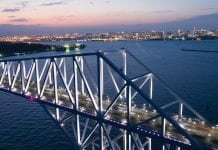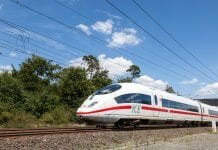
German manufacturer Siemens has revealed plans for a new high-speed train, which is capable of faster travel while also delivering greater energy efficiency.
The new high-speed train system will premiere at InnoTrans 2018, the world’s biggest trade fair for rail technology, which will be held in Berlin, Germany in September. In advance of the event, Siemens has offered details of the new system, called the ‘Velaro Novo’, which aims to meet hight standards of efficiency without sacrificing the passenger experience.
The company has been testing the system in Germany since April 2018, and expects the first Velaro Novo models to enter into service in 2023. Siemens suggests that the trains could operate at speed between 250km/h and 360km/h, while at the same time reducing emissions by a significant margin.
What is the environmental impact of the new train?
When operated at 300km/h, Siemens estimates that the new high-speed train system uses some 30% less energy than previous models, which it calculates could translate to average savings of 1,375 tons of CO2 per year.
This is partly achieved through the use of lightweight construction, which has reduced the train’s overall weight by 15%, which has made it significantly more efficient. The company has also highlighted the integration of advanced measurement and sensor technology, which offer cutting edge information which could reduce maintenance costs.
What results do Siemens expect from the rollout?
The previous generation of Velaro trains have operated in a number of European countries since 2000, including Belgium, France, Germany, the Netherlands and the UK, and so if these countries invest in the new model, this could represent a significant reduction in environmental impact.
Sabrina Soussan, CEO of Siemens’ Mobility Division, said that the Velaro Novo represents the most advanced train system the company has offered and was the culmination of years of hard work: “The new train… enables operators to offer improved passenger comfort and economy over the train’s entire lifecycle. What we are presenting today is the result of five years of development: a platform offering uniquely optimised energy consumption and maintenance costs, as well as maximum flexibility and reliability.”


















